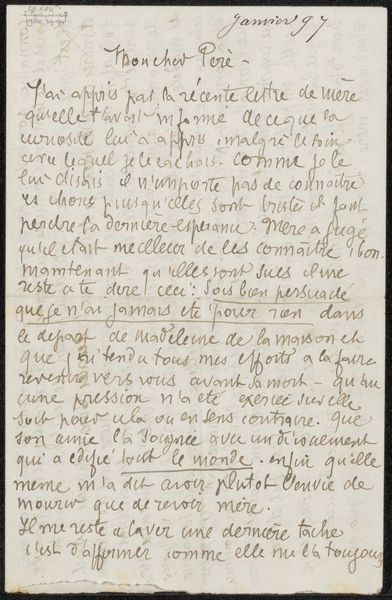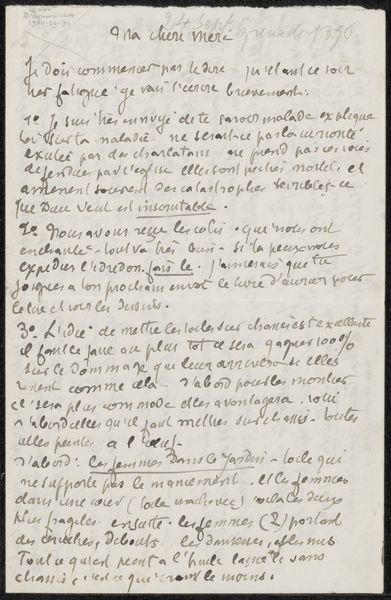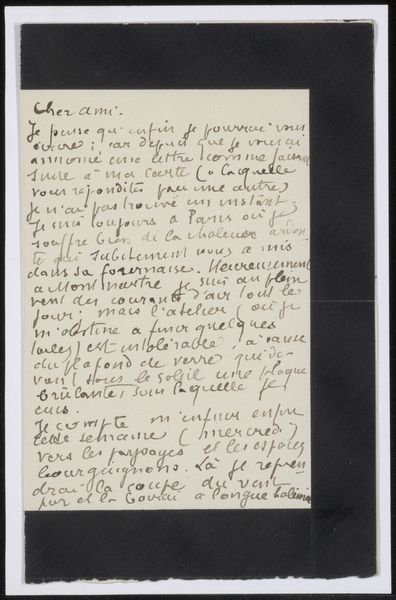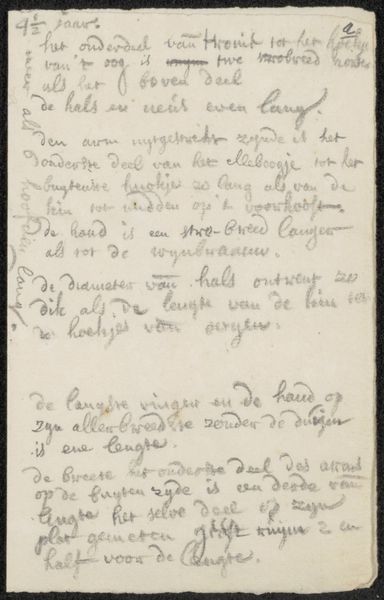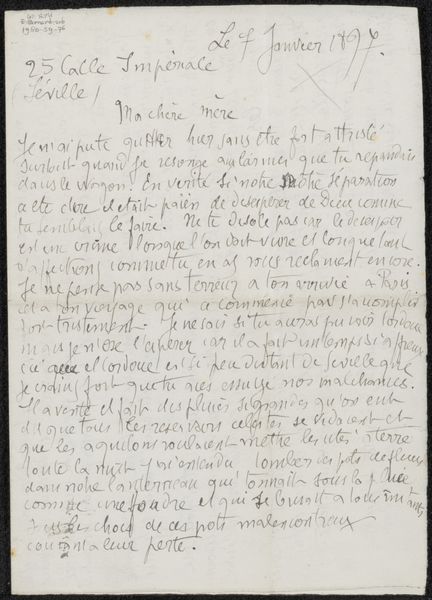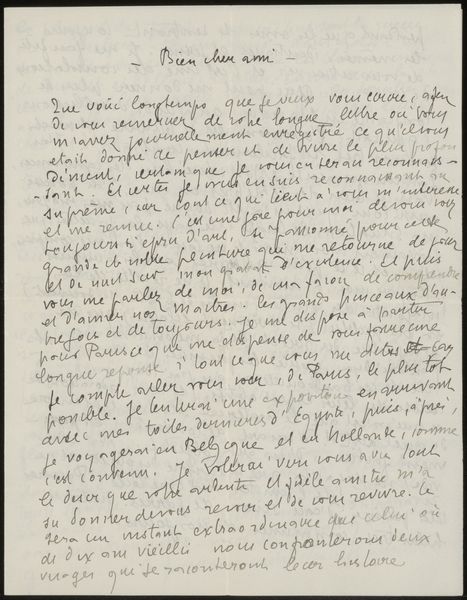
Copyright: Rijks Museum: Open Domain
Curator: Standing before us is “Brief aan Emile Ernest Bernard en Héloïse Bernard-Bodin,” a letter created by Émile Bernard, likely between 1878 and 1941. It is composed using ink on paper. The subdued gray of the letter contrasts nicely with the darker edge it rests on. It is part of a fascinating archive of correspondence that is now available in museum collections. Editor: Immediately, the intimacy of this handwritten note strikes me. There is an unmediated vulnerability here, quite literally through the personal touch of Bernard's hand. You sense immediacy; the work acts as an open window into a particular moment. The faded, fragile character of the medium hints at the precarious nature of communication and memory itself. Curator: Absolutely. Bernard's association with the Post-Impressionist movement certainly informs our understanding. We see his innovative exploration of form, particularly the deliberate choice of handwritten script as a means of direct expression. The text itself, the hand lettering, becomes an integral component, rather than merely a vehicle for content. It blurs the lines between function and art. Editor: I agree that the letter transcends mere communication, but I would add that such historical documents require thoughtful engagement, specifically about issues of access. Think about who this letter was intended for, who it was explicitly *not* for, and how its display today influences that dynamic. What considerations should museums make? Curator: A very important consideration, indeed. Its status as a rare document elevates it in the cultural sphere and turns a personal moment into a cultural artifact worthy of our institutional attention. Editor: Which raises essential questions about institutional gatekeeping, doesn't it? The act of archiving this, preserving it, inherently prioritizes certain narratives over others. But returning to the letter’s materiality, I’m captivated by how Bernard's penmanship feels both urgent and delicate; this, along with the stain and markings on the page tells a rich history of its journey. Curator: The interplay between personal sentiment and the weight of history creates a poignant experience for the viewer. It encourages a consideration of communication beyond mere information. Editor: Exactly, prompting us to see letters, not merely as archival matter but also as artifacts of individual expression.
Comments
No comments
Be the first to comment and join the conversation on the ultimate creative platform.






